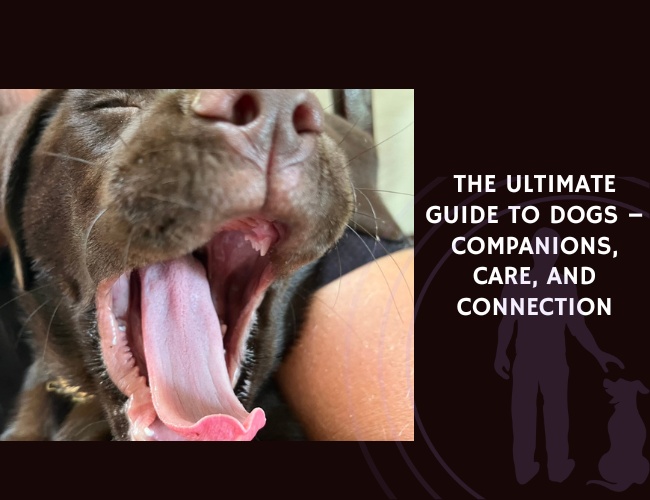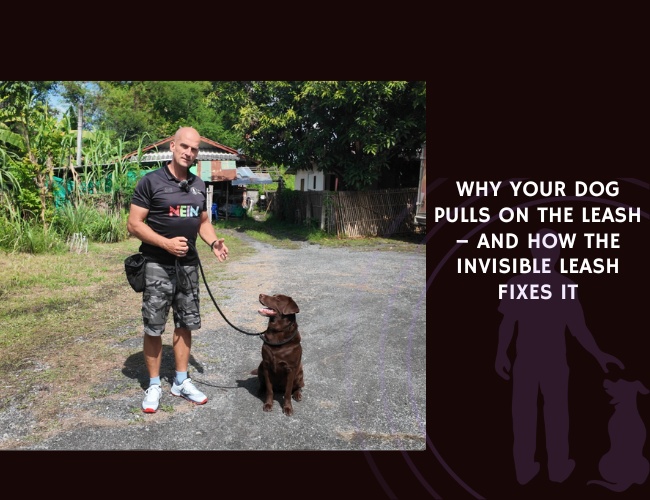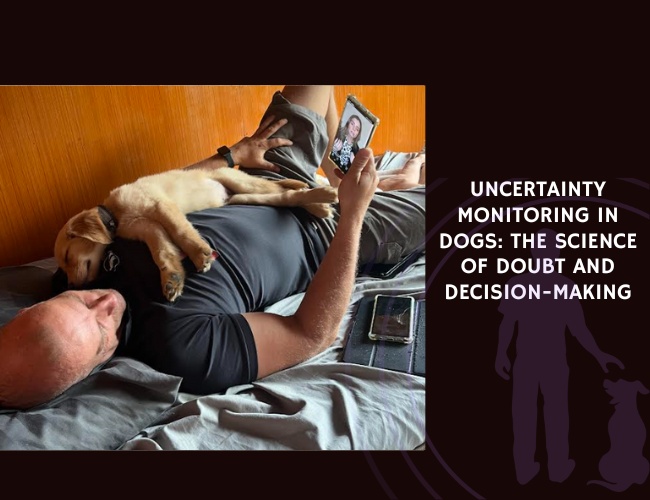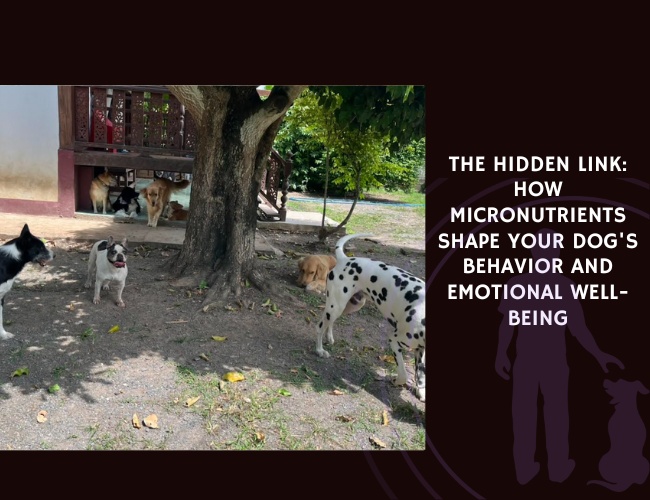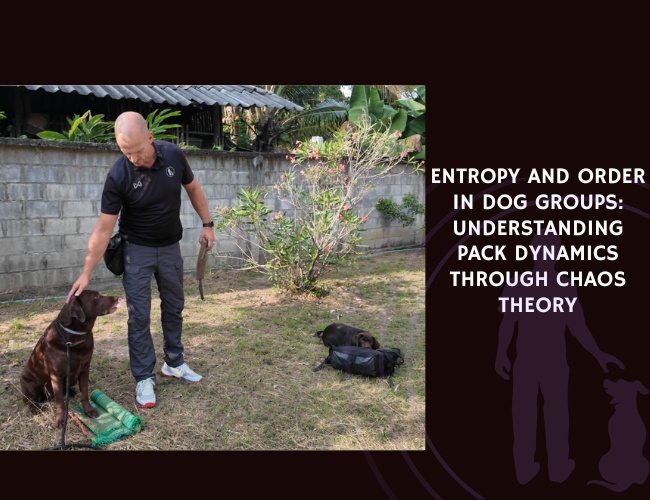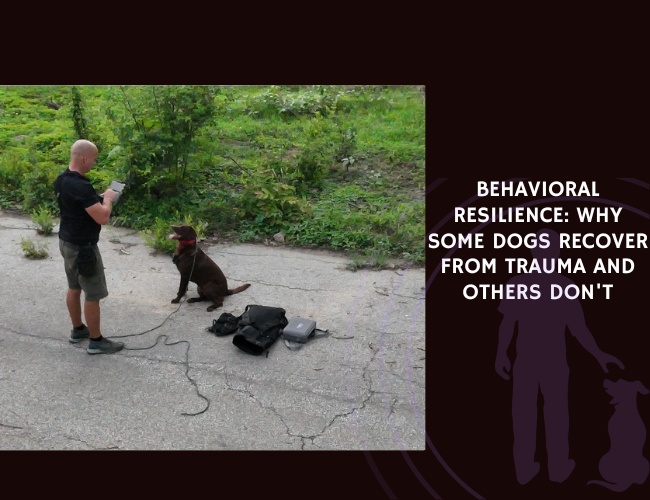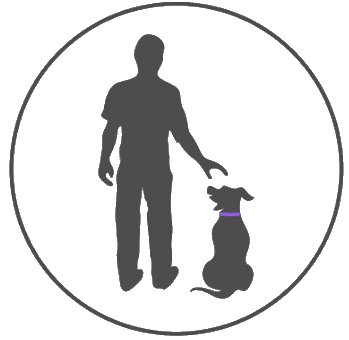Introduction: Why Dogs are Our Beloved Companions
Dogs have been our loyal companions for thousands of years, offering us unparalleled emotional support, understanding, and love. The bond between humans and dogs is unique, rooted in deep emotional and evolutionary connections. This chapter delves into what makes dogs such special members of our families and communities.
The Unique Emotional Bond Between Humans and Dogs
The relationship between humans and dogs is unlike any other. It’s based on a mutual understanding and deep emotional connection. Dogs have an incredible ability to sense our emotions and provide the comfort we need. They greet us excitedly at the door, stay by our side when we’re sad, and share in our happiest moments. This bond is often described as “man’s best friend,” and for good reason. The interactions between dogs and humans trigger the release of oxytocin, often referred to as the “love hormone,” which fosters attachment and trust in both species.
How Dogs Have Evolved to Understand Human Cues and Emotions
Dogs are not just born with these remarkable abilities; they have evolved over thousands of years to understand and respond to human cues and emotions. Unlike other animals, dogs can interpret our body language, facial expressions, and even tone of voice. They know when we are happy, sad, or stressed and react accordingly. This attunement has been shaped by selective breeding and the domestication process, which favored traits that made them better companions to humans. Research indicates that this close bond began with the domestication of gray wolves, who gradually adapted to living alongside humans, eventually evolving into the dogs we know and love today.
Overview of What Makes the Human-Canine Relationship Special
The human-canine relationship stands out because of its depth and complexity. Dogs offer unconditional love, loyalty, and a sense of security. They help reduce stress, anxiety, and depression, and encourage us to be more active and social.
Key factors that make this relationship special include:
- Communication: Dogs understand and respond to many of our verbal and non-verbal cues.
- Emotional Support: They are always there, providing consistent and non-judgmental companionship.
- Protection: Many dogs are naturally protective and can help ensure our safety.
- Health Benefits: Being a dog owner has been linked to numerous health benefits, including increased physical activity and improved mental health.
As we continue our exploration of our canine companions, it’s clear that the relationship between humans and dogs is built on a foundation of mutual love and understanding, making it one of the most profound connections we can experience.
Next, we will journey through time to see how our beloved dogs evolved from wild wolves to cherished household members.
The Evolution from Wolf to Companion: A Journey Through Time
The Origins of Domestication
The domestic dog’s journey from gray wolf to human companion began approximately 15,000 to 33,000 years ago. This incredible transformation is a testament to the power of evolution and the unique bond that formed between two very different species. Gray wolves, the ancestors of modern dogs, likely began their relationship with humans by scavenging near human campsites. Over time, the wolves that were tamer and more sociable found greater success in living alongside humans, giving rise to the first domesticated dogs.
The Role of Selective Breeding
Selective breeding played a crucial role in shaping the wide variety of dog breeds we see today. Early humans began to selectively breed wolves with desirable traits, such as reduced aggression and increased sociability. These selective pressures led to the development of dogs that were not only physically different from their wild relatives but also behaviorally distinct. Over thousands of years, humans continued to refine these traits, resulting in the diverse array of breeds, each with their own unique characteristics and behaviors.
Changing Roles Throughout Human History
Throughout history, dogs have served many roles in human society. Early dogs were likely used for hunting and guarding, taking advantage of their keen senses and protective instincts. As human societies evolved, so too did the roles of dogs. They became herders, helping to manage livestock, and even aided in warfare as scouts and messengers. In more recent times, dogs have transitioned into primarily being companions, valued for their loyalty, affection, and ability to provide emotional support.
The journey from wolf to companion reflects a remarkable story of adaptation and mutual benefit. As we continue to explore the unique relationship between humans and dogs, it becomes clear that their evolution and roles in our lives are deeply intertwined.
Understanding Dog Species Classification
Dog species classification is a fascinating aspect of canine biology that helps us understand the evolutionary journey and diversity of our beloved companions. Scientifically, dogs belong to the domain Eukarya, kingdom Animalia, phylum Chordata, class Mammalia, order Carnivora, family Canidae, genus Canis, and species lupus. This classification highlights their close relationship with other members of the Canidae family, such as wolves, foxes, and coyotes. The domestic dog, known scientifically as Canis lupus familiaris, shares a common ancestor with the gray wolf, which is evident in their genetic makeup and behavioral traits.
The classification system not only provides insights into the evolutionary history of dogs but also aids in understanding the vast array of breeds we see today. Each breed has been selectively bred for specific traits, resulting in the diverse appearances and behaviors observed across different dog breeds. From the loyal Labrador Retriever to the intelligent Poodle, each breed’s unique characteristics can be traced back to their genetic lineage and the roles they were historically bred to fulfill. Understanding dog species classification allows us to appreciate the rich tapestry of canine diversity and the evolutionary processes that have shaped them into the companions we cherish today.
Moreover, the classification system aids in appreciating the vast array of dog breeds we see today. Each breed’s distinct traits can be traced back to their genetic lineage and the roles they were historically bred to fulfill. For instance, the sleek Greyhound was bred for speed and agility, while the robust Mastiff was developed for guarding and protection. Recognizing these classifications allows us to better understand the incredible variety within the canine world and the evolutionary processes that have shaped them into the companions we cherish today.
Finding Your Perfect Match: Popular Dog Breeds Guide
Choosing the right dog breed for your family and lifestyle is a big decision. Different breeds have varied characteristics, energy levels, and needs, which can impact how well they fit into your daily life. Here, we’ll explore some popular dog breeds divided into small, medium, and large categories to help you find your perfect match.
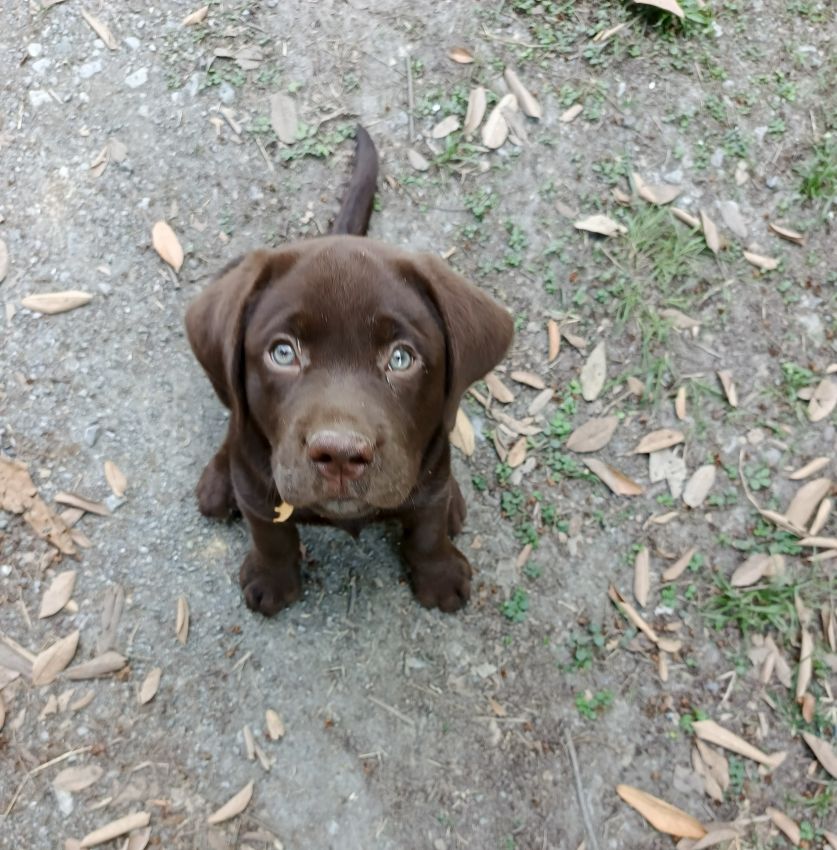
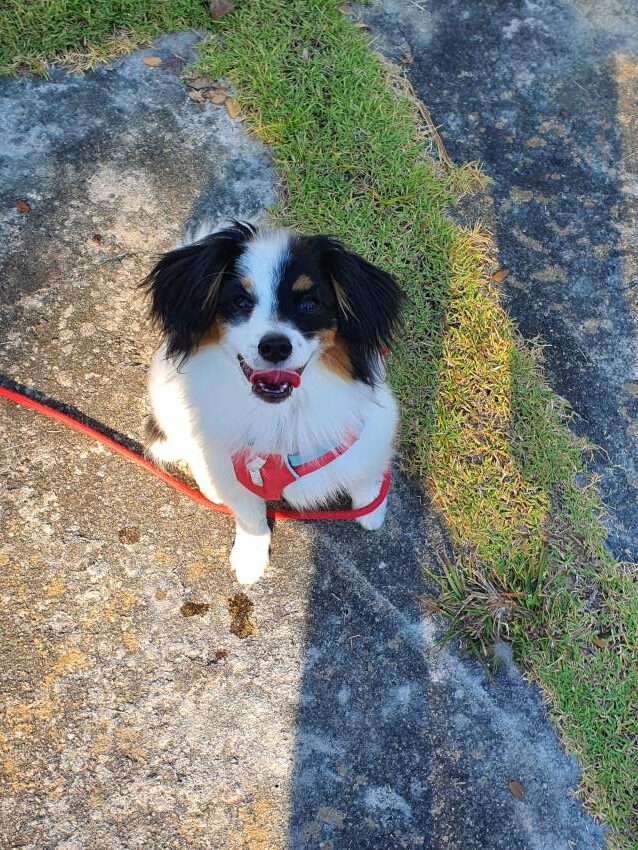
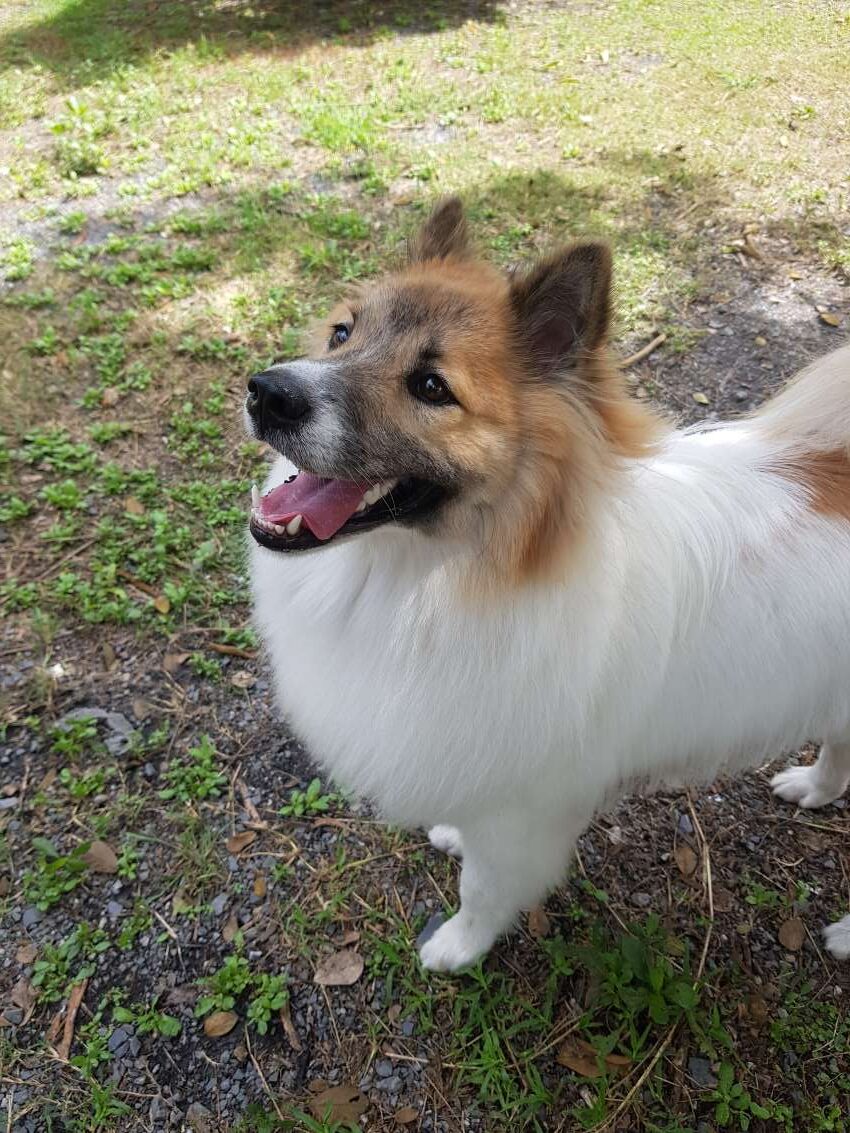
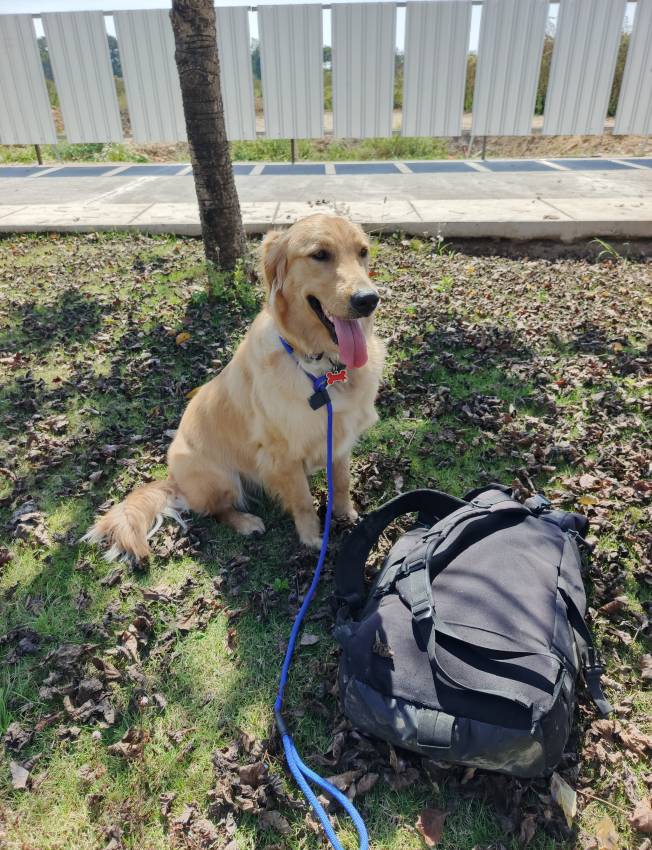
Small Breeds
Small dog breeds, those typically under 10kg, are ideal for individuals or families living in smaller spaces such as apartments or condos. They are usually more portable and can be easier to manage in cramped quarters.
- Chihuahua: Tiny but mighty, Chihuahuas are known for their loyal and energetic disposition. However, they can be prone to anxiety and need consistent socialization.
- Pomeranian: These fluffy companions are playful and affectionate. Regular grooming is a must to maintain their beautiful coats.
- Shih Tzu: Gentle and adaptable, Shih Tzus are great with children. Their long hair requires frequent brushing to prevent matting.
Medium Breeds
Medium-sized dogs, weighing between 10-25kg, often blend the portability of small dogs with the robustness of larger breeds. They usually require more exercise and mental stimulation compared to smaller dogs.
- Border Collie: Known for their intelligence and high energy, Border Collies excel in obedience and agility training. They need plenty of exercise and mental challenges to stay happy.
- Beagle: Friendly and curious, Beagles are great family pets but can be quite stubborn, making training a necessity.
- Cocker Spaniel: Affectionate and playful, Cocker Spaniels are good with children and need regular grooming for their luscious coats.

Large Breeds
Large dog breeds, typically over 25kg, require more space and can have higher exercise needs. They are often very loyal and can be great family protectors and companions.
- Labrador Retriever: These ever-popular dogs are friendly, intelligent, and great with children. They need lots of exercise to keep them healthy and happy.
- German Shepherd: Highly intelligent and loyal, German Shepherds are protective and require rigorous training and socialization to be well-rounded family pets.
- Bernese Mountain Dog: Known for their gentle and affectionate nature, Bernese Mountain Dogs are prone to certain health issues but are wonderful family pets, especially with children.
As you consider which breed is ideal for you, remember that every dog is an individual. Research specific breed characteristics and think about your living situation, energy levels, and how much time you can dedicate to a new furry friend. Providing the right environment for your dog ensures a happy, healthy, and harmonious relationship.
Next, we’ll delve into the essentials of dog care, including how to meet their physical and emotional needs, ensuring your pup thrives in your home.
Essential Dog Care: Meeting Physical and Emotional Needs
Nutrition and Feeding
Proper nutrition is the cornerstone of a healthy and happy dog. It’s important to provide a balanced diet tailored to your dog’s age, breed, and activity level. Puppies, for example, need more protein and fat to support their rapid growth and development, whereas senior dogs might require fewer calories and more fiber to maintain a healthy weight.
When selecting dog food, consult guidelines from reputable sources like your veterinarian to ensure your furry friend receives the right nutrients. Avoid feeding dogs human food, especially those items that are toxic to them like chocolate, onions, and garlic. Remember, treats should only make up about 10% of your dog’s daily caloric intake to prevent obesity.
Daily Feeding Routine
Establish a consistent feeding routine based on your dog’s needs. Most adult dogs do well with two meals per day, while puppies may require more frequent feedings. Always provide fresh water, ensuring your dog stays hydrated throughout the day.
Exercise Requirements
Regular exercise is vital for maintaining your dog’s physical and mental well-being. However, the amount of exercise your dog needs depends on their breed and energy level.
- Small Breeds: Dogs like Chihuahuas and Pomeranians typically need short, frequent bursts of activity. Playful games inside the home or short walks around the block can keep them engaged.
- Medium Breeds: Breeds like Beagles and Border Collies are energetic and require more intense exercise. Long walks, runs, or agility training are excellent ways to keep them fit.
- Large Breeds: Larger dogs such as Labrador Retrievers and German Shepherds need substantial daily exercise. Outdoor activities, fetch games, and structured playtime can prevent them from becoming bored and destructive.
Grooming Essentials
Grooming is another essential aspect of dog care, contributing to their overall health and appearance. Depending on your dog’s coat type, grooming needs will vary:
- Short-Haired Breeds: These dogs usually require less grooming but still benefit from regular brushing to remove loose hair and distribute skin oils.
- Long-Haired Breeds: Breeds like Shih Tzus and Cocker Spaniels need daily brushing to prevent matting and tangles. Regular trimming and baths are also necessary.
- Double-Coated Breeds: Dogs with a double coat, such as Siberian Huskies, need frequent brushing, especially during shedding seasons to keep their coat healthy and reduce shedding.
Always check for signs of parasites, skin infections, or unusual lumps during grooming sessions. Regular grooming helps in early detection of health issues.
Veterinary Care Fundamentals
Routine veterinary care is crucial to keeping your dog healthy:
- Regular Checkups: Annual veterinary visits help monitor your dog’s health and catch potential issues early.
- Vaccinations: Timely vaccinations protect your dog from various contagious diseases.
- Parasite Control: Regular treatments for fleas, ticks, and worms prevent infestations and health problems.
- Dental Care: Dental hygiene is often overlooked but essential. Regular brushing and dental treats can help maintain your dog’s oral health.
By following these care guidelines, you can ensure that your dog thrives both physically and emotionally. Understanding and addressing their unique needs will strengthen the bond between you and your canine companion.

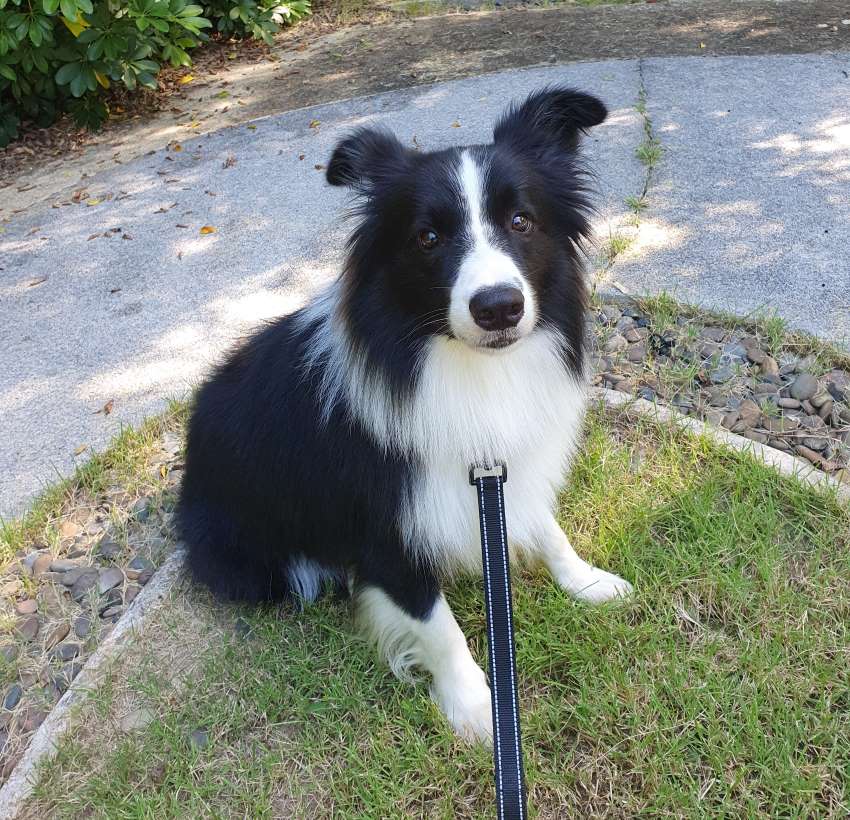
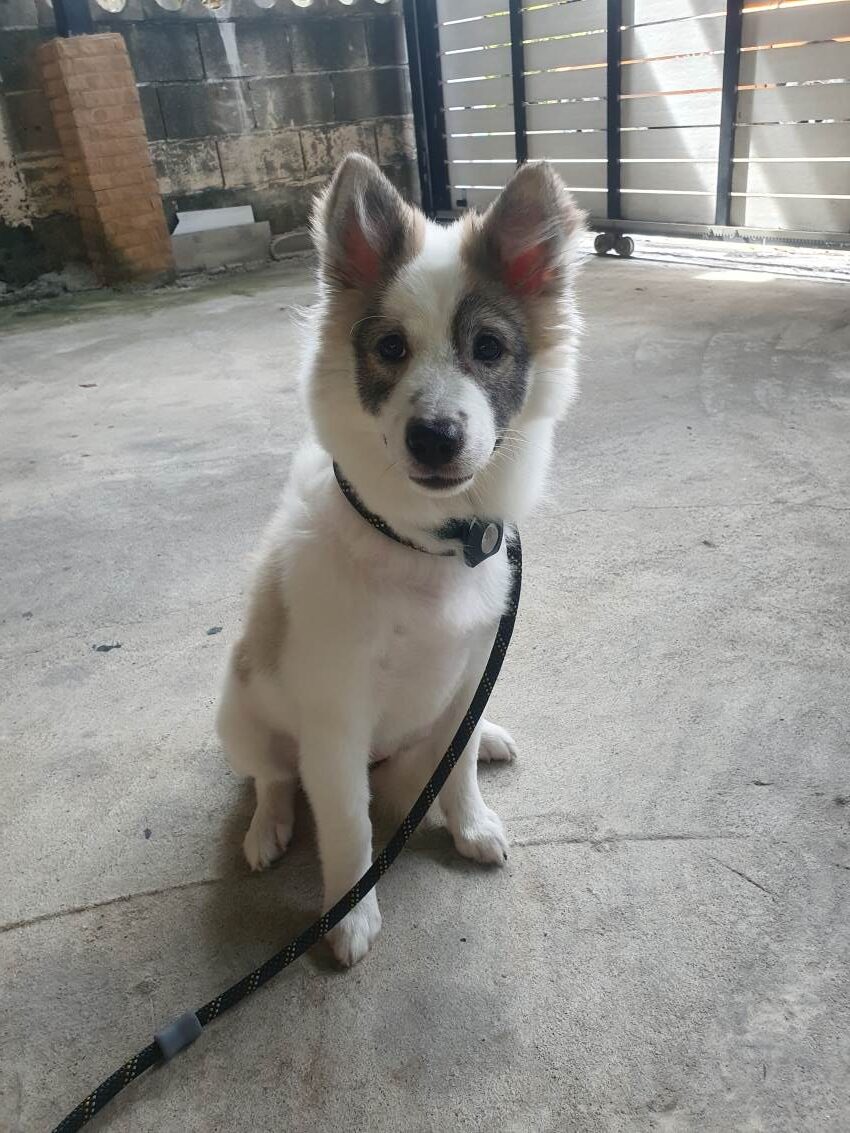
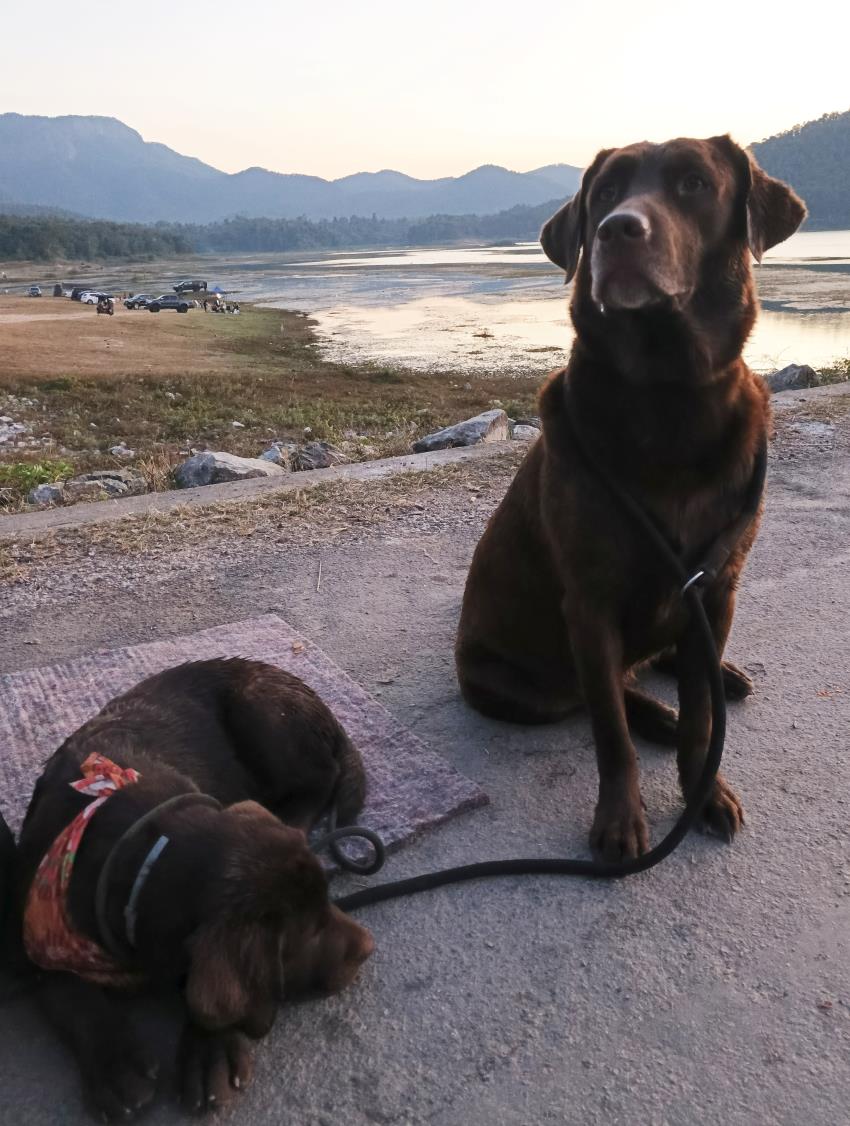
Understanding Canine Communication: Decoding Your Dog’s Behavior
Communication is key in any relationship, and understanding how your dog communicates can help strengthen your bond. Dogs use body language, vocalizations, and facial expressions to convey their emotions and intentions. Let’s delve into how to interpret these signals, address common behavioral challenges, and build a strong connection through effective communication.
Interpreting Body Language
Dogs are masters of non-verbal communication. They use various parts of their bodies to express themselves. Here are some key elements to watch for:
Tail Position and Movement
- Wagging: A wagging tail usually indicates excitement or happiness. However, the pace and direction of the wag can provide more context. A slow wag may suggest cautious interest, while a high-speed wagging tail is often a sign of enthusiasm.
- Stiff Tail: A tail held rigidly high can indicate alertness or even aggression. In contrast, a tail tucked between the legs typically signifies fear or submission.
Ear Movements
- Forward Ears: When a dog’s ears are perked up and facing forward, they are likely interested or alert to their surroundings.
- Flattened Ears: If the ears are pinned back, it might indicate fear, anxiety, or submission.
Eye Contact
- Direct Stare: While a direct gaze can be challenging or assertive, in a relaxed context, it can also be a sign of affection.
- Averted Gaze: Turning their eyes away can show submission or a desire to avoid conflict.
Addressing Common Behavioral Challenges
Understanding your dog’s body language is only part of the equation. Addressing behavioral problems with positive reinforcement is essential for maintaining a harmonious relationship.
- Barking: Excessive barking can be managed by identifying the trigger and desensitizing your dog to it gradually. Reward them for remaining calm.
- Chewing: Provide appropriate chew toys and redirect your dog’s attention when they start chewing on unsuitable items.
- Jumping: Consistently ignore jumping and reward your dog for sitting or remaining calm when greeting people.
Using positive reinforcement, which involves rewarding desired behaviors rather than punishing unwanted ones, can help your dog learn what is expected of them.
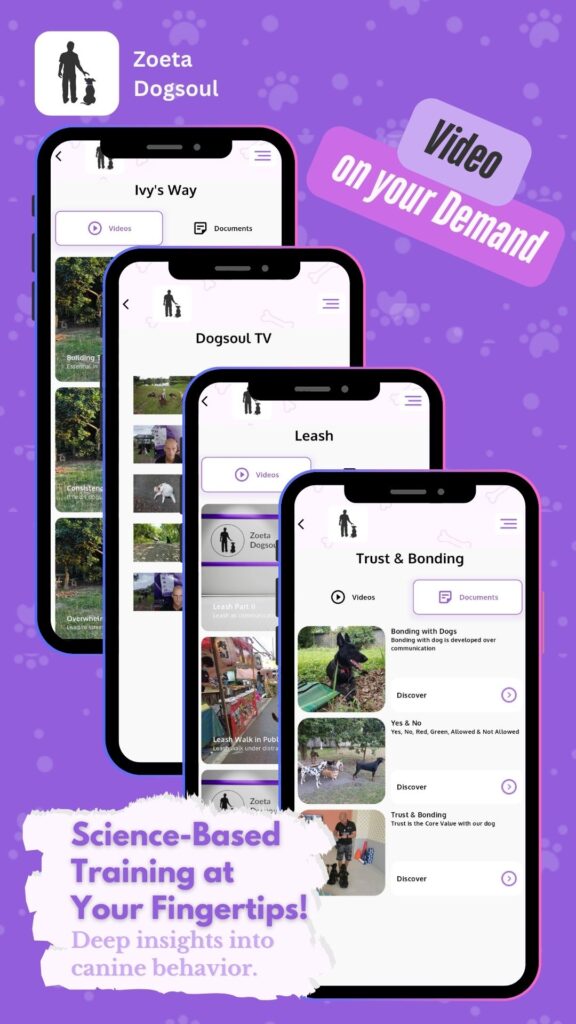
Building Trust and Connection
Effective communication with your dog involves more than just understanding their body language and correcting misbehaviors. It’s about building a trusting relationship.
- Consistency: Consistent responses to your dog’s behavior help them understand what you expect. If you reward good behavior consistently, your dog will learn to repeat it.
- Patience: Building a strong bond takes time. Be patient and understanding as your dog learns and grows.
- Tone of Voice: Dogs are sensitive to the tone of your voice. Use a calm, reassuring tone to foster trust and a higher-pitched voice to express excitement or praise.
By understanding and responding to your dog’s communication cues, you cultivate a bond based on trust and mutual respect. This connection not only makes your life together more enjoyable but also enhances your dog’s well-being.
Next, we will explore how to create safe and meaningful relationships between dogs and children, focusing on selecting family-friendly breeds, establishing boundaries, and fostering responsibility.
Dogs and Children: Creating Safe and Meaningful Relationships
Introducing a dog to your family is a wonderful experience, but it’s important to establish a safe and harmonious relationship between your furry friend and your children. Selecting the right family-friendly breed, setting clear boundaries, and teaching appropriate interaction are key to creating a positive environment. Let’s explore how to achieve this balance.
Selecting Family-Friendly Breeds
Choosing a breed that fits well with children is crucial. Some breeds are known for their patience and gentle nature, making them ideal for families. Here are a few recommendations:
- Labrador Retriever: Friendly, intelligent, and great with children, but they need lots of exercise to stay happy and healthy.
- Beagle: Friendly and curious, Beagles are good with children, although they can be a bit stubborn.
- Cocker Spaniel: Affectionate and playful, Cocker Spaniels are good with children but require regular grooming.
- Bernese Mountain Dog: Gentle and affectionate, these dogs are excellent with kids, though they are prone to certain health issues.
These breeds are just a few examples. It’s essential to research the specific characteristics and needs of any breed you consider to ensure they match your family’s lifestyle and preferences.
Establishing Clear Boundaries and Teaching Children Appropriate Interaction
Teaching children how to interact with dogs is important for the safety and well-being of both. Here are some guidelines to help:
- Establish Clear Rules:
- Teach children to always ask for permission before approaching a dog.
- Explain the importance of gentle behavior—no pulling tails or ears.
- Encourage calm, quiet interaction to avoid startling the dog.
- Demonstrate Safe Interaction:
- Show children how to pet a dog, starting with slow and gentle strokes.
- Teach them to avoid a dog’s face and head, especially when the dog is eating or sleeping.
- Emphasize the significance of respecting the dog’s space and avoiding sudden movements.
- Lead by Example:
- Children often mimic adult behavior, so it’s essential to demonstrate kindness and respect towards dogs.
- Always supervise interactions, especially with younger children, to prevent any accidental harm.
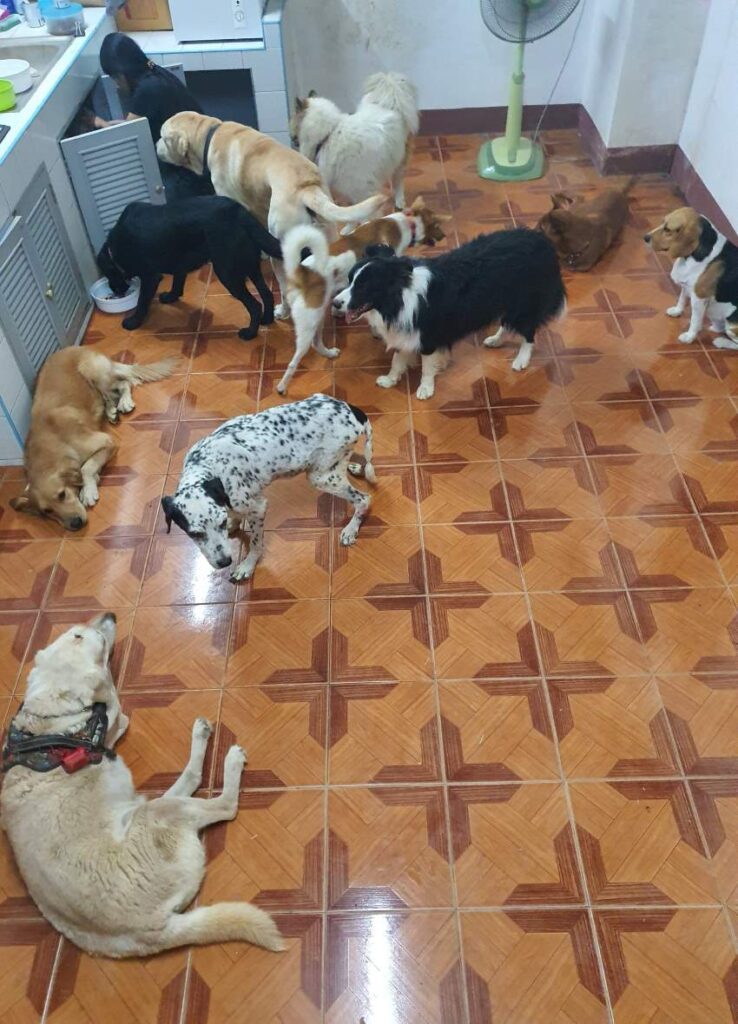
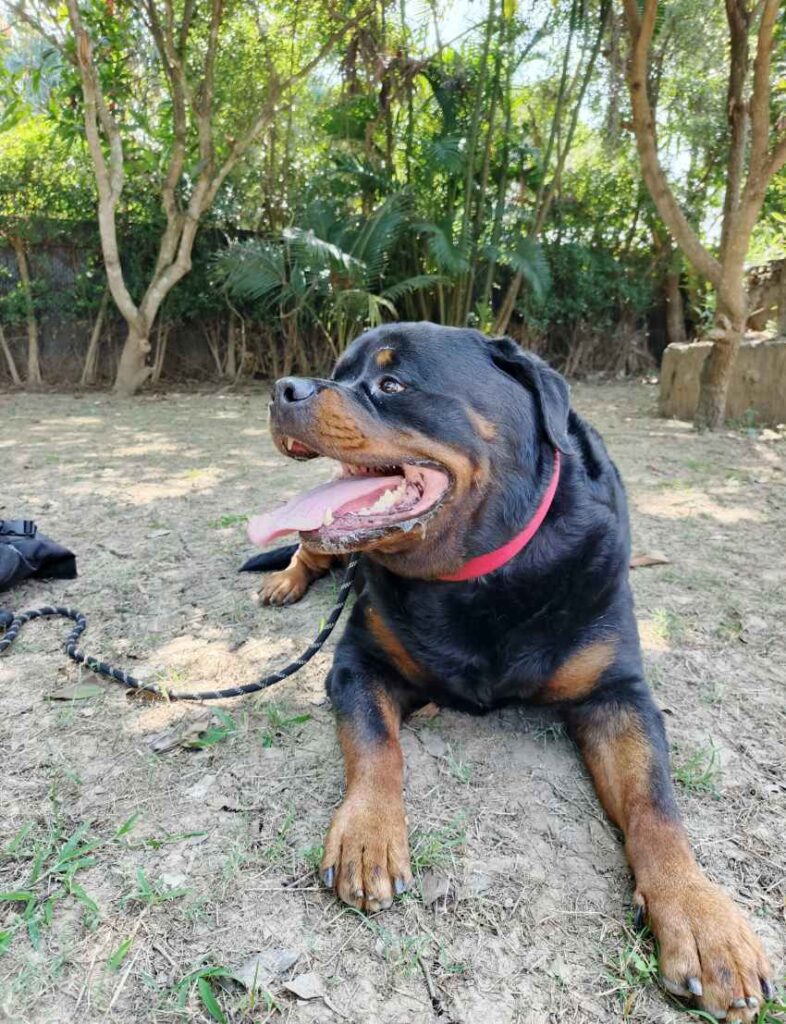

Supervision Strategies and Fostering Responsibility in Children
Supervision is crucial to ensure the safety of both your children and dog. Here are some strategies:
- Never Leave Young Children and Dogs Unattended: Always keep a close watch during their interactions to prevent accidents.
- Teach Children About Dog Cues: Help them understand dog body language, such as wagging tails or growling, to recognize when a dog might be uncomfortable.
- Encourage Involvement in Dog Care: Assign age-appropriate tasks to children, such as filling the water bowl or helping with feeding, to foster responsibility and empathy. This involvement can make children feel an important part of the dog’s life and can strengthen their bond.
Creating a safe and meaningful relationship between your dog and your children involves careful planning and continuous effort. By selecting the right breed, setting clear boundaries, and teaching responsible interactions, you can ensure that both your dog and children enjoy a happy and harmonious coexistence. This loving connection will bring immense joy to your household, enriching everyone’s lives.
As you consider these steps, keep in mind the broader aspects of dog ownership, including time commitment, financial considerations, and ensuring compatibility with your lifestyle. Each chapter of this guide aims to support you on this journey, helping you foster a fulfilling relationship with your canine companion.
Why Dogs Are Irresistibly Cute
Dogs have an innate ability to capture our hearts with their adorable features and behaviors. One of the primary reasons dogs are perceived as cute is due to their physical traits, such as large, expressive eyes and floppy ears, which evoke nurturing responses in humans. These features are reminiscent of human infants, triggering a protective and affectionate instinct. Additionally, dogs often display playful behaviors, like wagging their tails or performing a charming head tilt, which further enhances their cuteness. This combination of physical attributes and endearing actions makes dogs universally appealing and beloved companions.
The Science Behind Canine Cuteness
The concept of “cuteness” in dogs is not just a matter of opinion; it has scientific underpinnings. Research suggests that dogs have evolved to exhibit certain facial expressions and behaviors that appeal to humans. For instance, the “puppy dog eyes” expression, characterized by raised inner eyebrows, makes dogs’ eyes appear larger and more childlike, eliciting a strong emotional response from humans. This evolutionary trait likely developed as a survival mechanism, strengthening the bond between dogs and humans. By understanding these cues, we can appreciate the deep-rooted connection that makes dogs such cherished members of our families.
How Dogs Use Cuteness to Communicate
Beyond their physical appearance, dogs use their cuteness as a form of communication. When a dog smiles or tilts its head, it is not merely for show; these actions serve specific purposes. A dog’s smile, for example, can indicate submission or a non-threatening demeanor, while a head tilt may help them better understand human speech and emotions. These behaviors are not only adorable but also functional, allowing dogs to interact effectively with their human companions. By responding positively to these cues, we reinforce the behaviors, creating a cycle of mutual affection and understanding that strengthens the human-canine bond.
The Commitment of Dog Ownership: Is It Right for You?
Welcoming a dog into your home is an exciting journey filled with joy and love. However, it’s essential to understand the responsibilities that come with dog ownership. Let’s delve into what you need to know before making this significant commitment.
Time Commitment: Daily Care, Training, Exercise, and Companionship
Owning a dog is a time-intensive responsibility. Dogs require daily attention, training, exercise, and companionship. Here’s what you can expect day-to-day:
- Daily Care: From morning walks to bedtime routines, dogs thrive on a regular schedule. This involves feeding, bathroom breaks, grooming, and playtime.
- Training: Training is a continuous process. Positive reinforcement methods are the most effective, focusing on reward-based learning to instill desired behaviors.
- Exercise: Dogs need regular exercise to stay healthy and happy. The amount and type of exercise depend on the breed and energy level of the dog. A Border Collie, for example, will need significantly more exercise than a Pomeranian.
- Companionship: Dogs are social animals and need regular interaction with their human family. This strengthens the bond and ensures they feel secure and loved.
Financial Considerations: Including Food, Veterinary Care, and Unexpected Expenses
Next, let’s discuss the financial commitment. Owning a dog can be costly, and it’s vital to be prepared for both regular and unexpected expenses:
- Food: A balanced diet is crucial for your dog’s health and well-being. The cost of dog food can vary based on quality and dietary needs. Consulting your vet can help you choose the best options.
- Veterinary Care: Regular checkups, vaccinations, and parasite control are essential to keep your dog healthy. Additionally, unexpected medical issues can arise, making it important to have a financial cushion for emergencies.
- Grooming: Depending on your dog’s breed, grooming needs can range from minimal to extensive. Breeds like the Cocker Spaniel require regular grooming to maintain their coat and avoid skin issues.
- Other Expenses: Consider other costs like toys, training classes, pet insurance, and boarding when planning vacations.
Lifestyle Compatibility and Home Environment Preparation
Before bringing a dog into your home, evaluate whether your lifestyle and living environment are suitable for a new furry friend:
- Lifestyle Compatibility: Ensure that your daily routine and lifestyle can accommodate the needs of a dog. High-energy breeds need active owners who can provide adequate physical and mental stimulation. If you work long hours, consider if you have the means to hire a dog walker or arrange for daycare.
- Home Environment: Your home should be a safe and welcoming environment for a dog. This means securing potential hazards, providing comfortable sleeping areas, and having enough space for your dog to play and move around freely.
Ultimately, owning a dog is a rewarding experience that requires a commitment to time, finances, and lifestyle adjustments. By understanding these responsibilities, you can make an informed decision about bringing a dog into your life, enriching both your and your future pet’s lives.
Conclusion: The Lifelong Journey of Dog Companionship
The Transformative Impact on Human Well-Being
Dogs have an extraordinary ability to transform our lives in countless positive ways. One of the most profound impacts is on our emotional well-being. The simple act of petting a dog can release oxytocin, a hormone that promotes bonding and stress relief in both humans and dogs. This emotional connection often translates into reduced anxiety, depression, and loneliness for dog owners. Moreover, dogs offer unconditional love and companionship, providing a vital source of comfort in times of need. The joy and laughter that dogs bring to our lives cannot be overstated; their playful antics and loyal nature light up any home they enter.
Mutual Benefits of the Human-Canine Relationship
The bond between humans and dogs is a two-way street, marked by mutual benefits. Dogs contribute significantly to our physical health. Regular walks help improve cardiovascular health and maintain a healthy weight. The responsibility of caring for a pet also promotes a sense of routine and purpose. For dogs, this relationship fulfills their needs for companionship and mental stimulation. Dogs thrive on human interaction, and their happiness is closely tied to the attention and care they receive from their owners. Training and bonding activities can stimulate a dog’s mind, helping to curb behavioral issues and foster a well-adjusted pet.
The Rewards of Responsible Dog Ownership
Owning a dog is a rewarding journey filled with countless joyful moments. However, it comes with significant responsibilities that should not be taken lightly. Being a responsible dog owner involves providing a balanced diet, regular exercise, and consistent medical care. Proper grooming and hygiene practices ensure that dogs remain healthy and comfortable. Emotionally, dogs require your time and affection to feel secure and loved.
Responsible ownership isn’t just about meeting basic needs; it’s about understanding and fostering the unique personality of each dog. Tailoring training and care to your dog’s specific breed and characteristics can enhance the bond you share. The effort put into this relationship comes back to you in the form of loyalty, love, and the unmatched joy of a happy canine companion.
Caring for a dog instills valuable life lessons, particularly for children. It teaches empathy, responsibility, and the importance of nurturing another living being. The mutual respect and trust developed through consistent care and affection lay the foundation for a lifelong bond that is deeply rewarding for both dog and owner.
As you embark on this lifelong journey, remember that the rewards are plentiful, but so are the commitments. By integrating a dog into your family with care and consideration, you ensure a relationship built on mutual respect and love that will last a lifetime.

